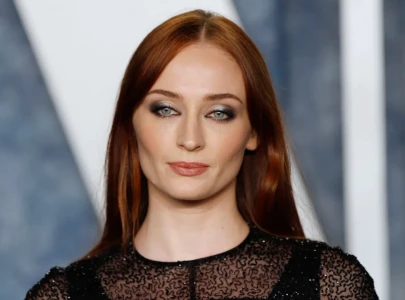
Smart and disciplined, dressed in crisp, clean, immaculate uniforms, the army personnel march every year on the Pakistan Day parade. Every soldier wants to look his best. The Express Tribune explores the process of sourcing these garments from fabric to uniform.
Tailors approved by the GHQ (General Head Quarters) are authorized to stitch uniforms for army personnel and do it to utmost perfection. “We have been stitching uniforms for army officers since 1947. My grandfather made this shop, and used to stitch uniforms for officers of the British Indian Army. My father continued the job and now I am running it,” said Saleem, owner of a pre-partition shop famous for stitching army uniforms.
“We get specific instructions from the army and follow them precisely. There are many army officers for whom we have stitched uniforms from the time they were recruited till they became generals. From General Ziaul Haq, former army chief and president General Pervez Musharraf to former Punjab governor Lt. General Kha-lid Maqbool all have been our clients. Khalid Maqbool is our client to date, he now comes to us for stitching his civilian garments. Normally, it takes a week to stitch a uniform. When Pakistan sent an army uniform to the former Shah of Iran, it was us who stitched it, we even have a hand written statement by Zulfiqar Ali Bhutto,” he said.
If there is even a slight change in the uniform, the tailors are informed directly by the GHQ. “We don’t make the badges and insignias. Those are sourced from Rawalpindi and sent to us, we stitch them on to the uniform as per the rank of the officer,” he added. “The majority of the uniforms being stitched currently are the camouflage ones as opposed to the khaki uniforms,” he told The Express Tribune.
An army official who didn’t want to be named said: “The khaki uniform was changed to camouflage when Musharraf was Army Chief. There are different days and occasions when we wear the khaki uniform. The days differ from place to place; in Lahore they wear the khaki uniform on Mondays.”
Even the fabric used is custom made specifically for the army. “The cloth used for the uniforms is of high quality. Textile mills send samples to the GHQ, once approved they manufacture the fabric. This cloth is then officially available at the army’s Canteen Store Departments (CSD); authorised tailors also keep it for sale. Earlier, ‘jawans’ were given free sized uniforms from their respective units which were then altered. Now jawans have the option of getting the stipend and getting theirs custom-made,” an army officer told The Express Tribune.
The officer added that making amendments in the uniform is penalised severely. “Uniform means uniformity — you can’t even change the numbers of buttons on it”.
The three important things in the army uniform:
1) Ribbons: Signify the service of an officer, about the medals and honors.
2) Formation sign on the left shoulder: This identifies where the officer is currently serving. Which brigade/division.
3) Badges above the name plate: Projects how many professional courses an officer has completed. The rank of an officer is identified from the stars of his shoulders. The officers who are colonel or above have red dots on the collar while officers till lieutenant colonel have identification mark of their regiment.
Published in The Express Tribune, March 23rd, 2011.

















COMMENTS
Comments are moderated and generally will be posted if they are on-topic and not abusive.
For more information, please see our Comments FAQ